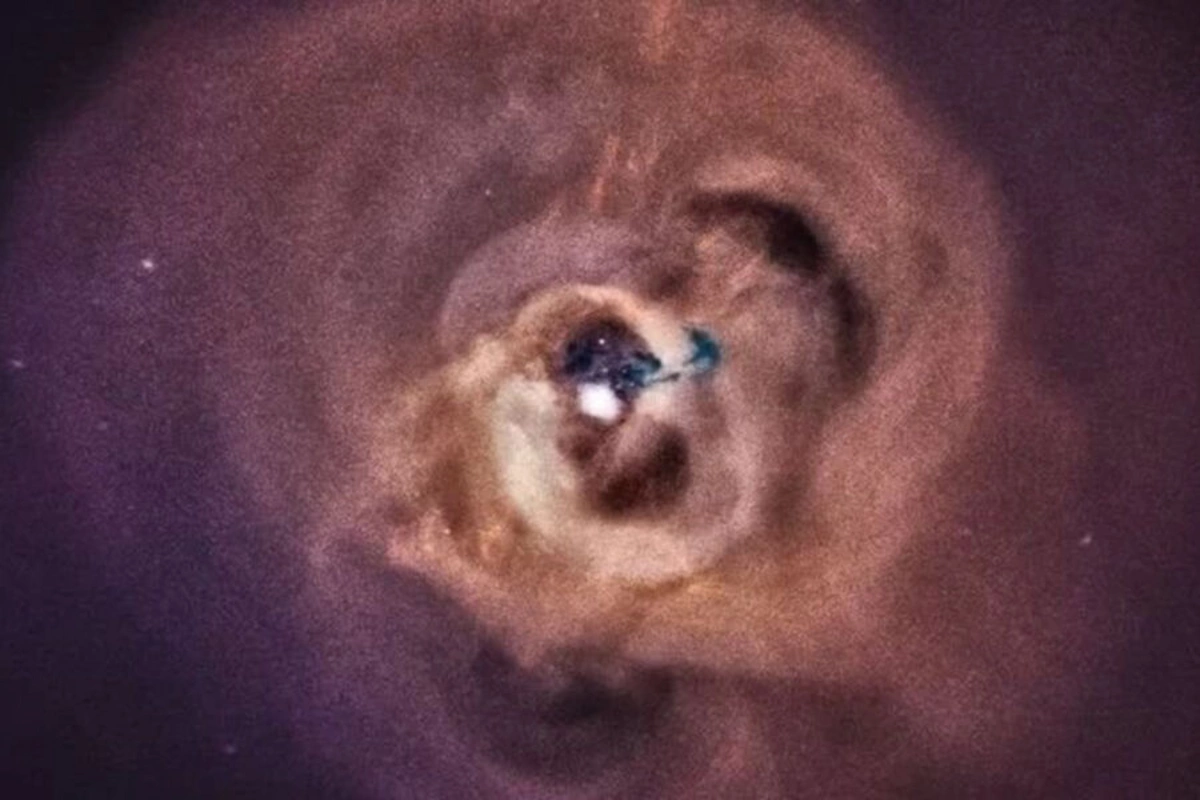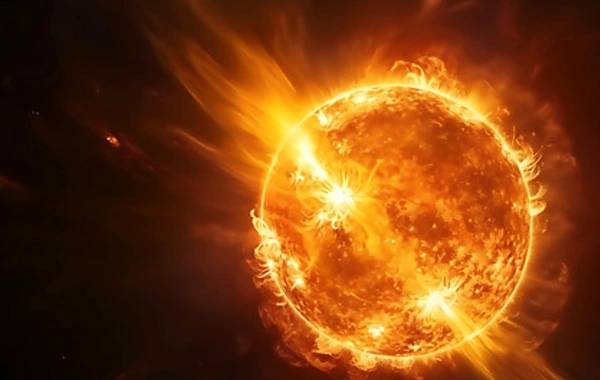Giant black hole has awakened, scientists say

An international team of astrophysicists has discovered an amazing phenomenon in the depths of space: a supermassive black hole at the center of galaxy SDSS1335+0728, located 300 million light-years from our planet in the Virgo constellation, unexpectedly emerged from a dormant state after many decades of inactivity. The cosmic object, named Ansky, began generating powerful and regular bursts of X-ray radiation - a phenomenon known to specialists as quasi-periodic eruptions (QPE), one of the rarest and least studied phenomena in the Universe. The research results are published in the prestigious scientific journal Nature Astronomy.
The first signs of the black hole's awakening were recorded in late 2019, when astronomers noticed an unusual increase in the galaxy's brightness. This prompted scientists to organize a large-scale observational campaign using an entire arsenal of space observatories, including XMM-Newton, NASA Swift, NICER, and Chandra. However, only in February 2024 were researchers able to register the long-awaited X-ray radiation. The scientific team led by Lorena Hernandez-Garcia from the University of Valparaiso documented rhythmic flashes with an interval of about 4.5 days - an absolute record duration among all quasi-periodic eruptions known to science.
"We are observing quasi-periodic eruptions from a black hole that has just transitioned to an active phase for the first time," emphasized Hernandez-Garcia, the research leader.
Remarkably, the energy potential of each of the recorded eruptions is a hundred times greater than similar events observed previously. At the same time, astronomers did not find any traces of a destroyed star, which usually accompanies such activity bursts. Researchers hypothesize that the cause of the flashes could be gas that has entered the black hole's accretion disk, which is periodically disturbed by a passing cosmic object - possibly a small black hole or a star.
"Ansky's bursts amazed us with their brightness and duration. They go beyond all existing models," noted Johin Chakraborty, one of the co-authors of the scientific paper.
Observing Ansky in real-time gives scientists a unique opportunity to take a fresh look at the behavior of black holes and the nature of high-energy processes occurring in the centers of galaxies. Moreover, there is a possibility that these powerful flashes are accompanied by gravitational waves, which could potentially be detected by the European Space Agency's future space mission - LISA.
"At the moment, we have more hypotheses than concrete data," admitted Erwan Quentin, a researcher at the European Space Agency. - "But Ansky opens a window for us into the mysterious and unpredictable world of black holes".
Similar News
When should you drink your last cup of coffee?
Coffee for many is an essential part of the day: it invigorates, improves concentration, and even enhances mood. But if you drink it too late, you can forget ab...




 Azərbaycanca
Azərbaycanca  По-русски
По-русски  English
English 






